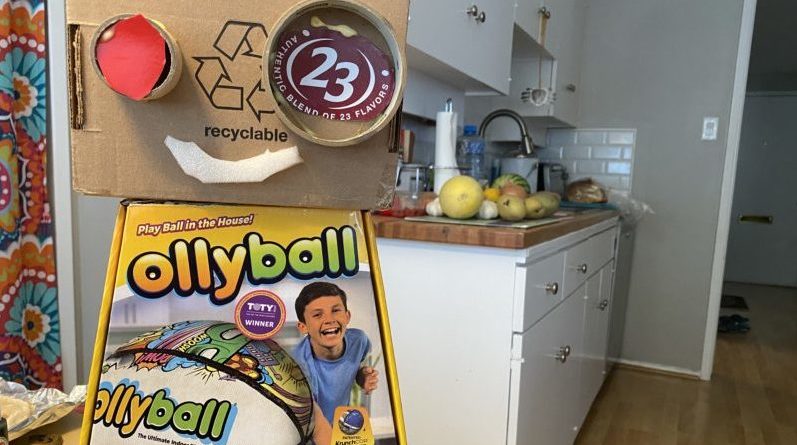Sheltered Diaries: What On Earth?
Today, Tiny’s art teacher led them through the paces of creating robots out of scrap cardboard and found objects – in honor of Earth Day.
“It’s Earth Day but we can’t go out on the earth because of COVID-19,” he told me earlier that morning. “But I like robots, so I guess I’ll do this.”
“What do you know about Earth Day?” I asked him.
“I know that Earth Day is about liking the Earth and not messing everything up, but we keep dumping stuff in the ocean and everyone should compost more,” he said.
“And did you know that smog is going away in places right now because everyone is staying in their house?”
The entire conversation leads me to how we talk about the news lately with our kids. Tiny lives in a home with journalists, so just by osmosis, he’s picking up a fair amount.
I love having these candid discussions with him and knowing that he’s really absorbing a lot. But the other issue is – he’s really absorbing a lot. At what point do we cut it off, and what are some appropriate sources of information for kids?
For one, a very important piece of advice given to me a couple years ago, which has shaped how I consume news and produce news, is also factoring in a lot to how we talk about the pandemic with Tiny.
A few years ago, I went to a conference and heard Michelle Gielan speak about her book – Broadcasting Happiness.
The book resonates with me because she was once a journalist. I’ll be honest, though – I’m not the self-help book type. But this book, with its candor regarding her life as a journalist and her realization about what was making her unhappy about her job, helps me do my job better.
We can’t just avoid the news. Avoiding it, for one, Gielan explained, means we miss key information that can govern our decisions. But more importantly, it’s unrealistic (especially in this scenario) to avoid bad news – that bad news is also what can keep us safe.
So how do we deal with needing to be vigilant but not becoming overwhelmed?
Gielan explained that when she was a working journalist, she proposed a week where for every troubling story, they would supply a story that helped find a solution. It was during the time of the housing bubble bust and the recession, and it seemed like every story was bad news.
So that week, if they wrote about people on the brink of foreclosure, the next story would be about helping a family navigate the various possible government aid solutions. Another story about the housing crisis was followed by a story about two brothers who had been somewhat estranged but reached out when they both were on the brink of losing their homes. They reconciled, pooled their money to save one home, and became roommates.
People began finding their solutions. And the ratings proved that people could handle bad news,if a solution followed.
So when we talk about COVID-19 at our house, we couch it in terms of, “Yes, this can make people very ill, and some people died, but please know that Mom and Dad can do the worrying about that. What we can do as a family is talk about how we can help people who maybe are seeing a business struggle, or how we’re going to help ourselves still be kind to each other, and just be helpful generally.”
Our discussions about the pandemic, in turn, center more about what we can do and how we can collaborative as a family, and how we can make sure we continue to have connections with friends and family.
Our next issues of Park Cities People and Preston Hollow People are also chock full of great examples of what some people are doing to help their community during this – and being open about what I was working on with Tiny during this period has created some great conversations, too.
We can’t get away from not being able to go to school and work, or the fact that some things are hard to get right now, but we can focus on the things we can do. And helping other people (even if it’s within our house) makes hearing the bad news easier, because it’s human nature to want to do something – to fix something – when we get bad news.
Some of our favorites for kid-friendly news consumption include NBC Nightly News’ twice-weekly kids’ edition, and Steve Hartmann’s Kindness 101 from CBS News.
So what are some of your ways to have discussions about the pandemic in your house? Let us know in the comments!









